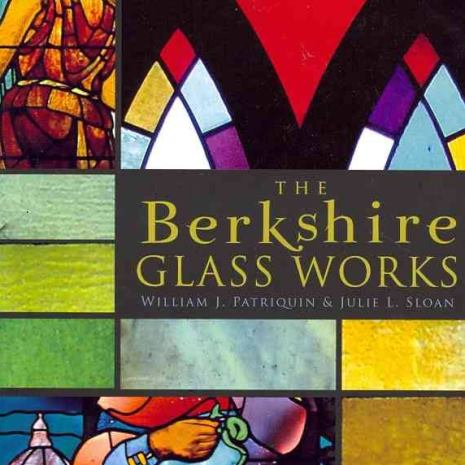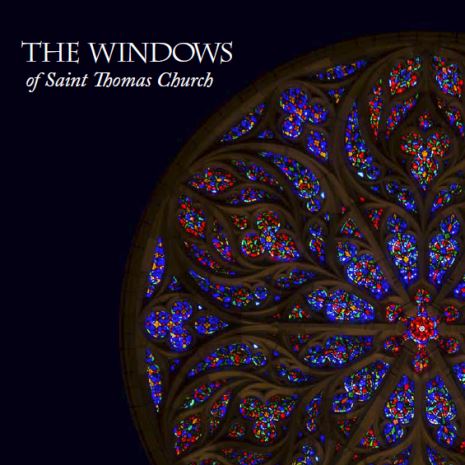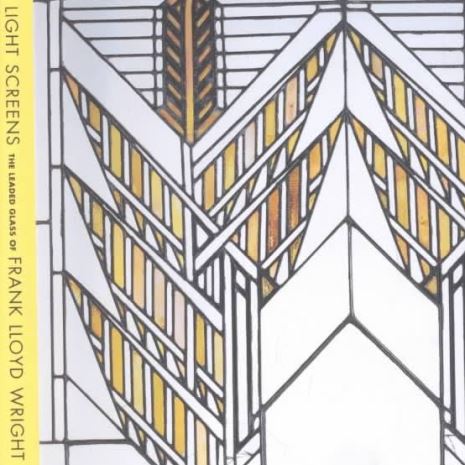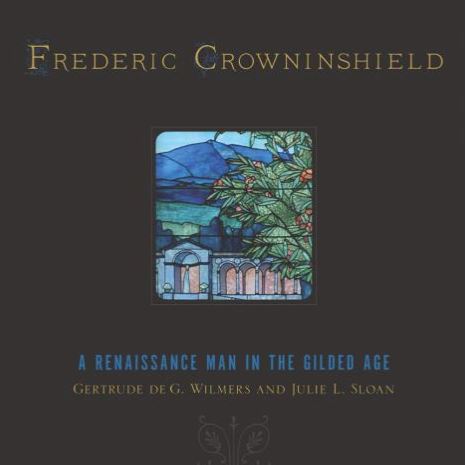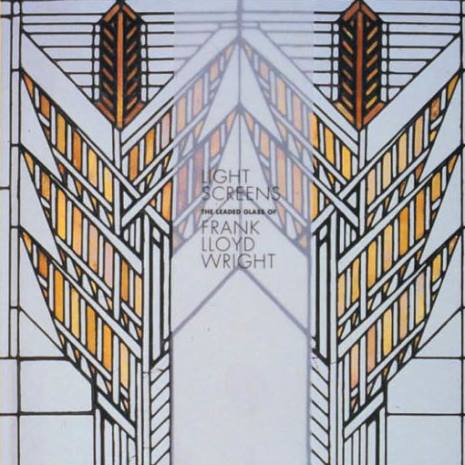The Rivalry Between Louis Comfort Tiffany and John La Farge - Part 2
Both artists' interest in opalescent glass began in the mid-1870s, but lack of suitable glass for use in windows delayed the successful completion of an opalescent window for several more years. Opalescent glass was made only in pressed glass factories and so was not available in flat sheets.
In order to obtain glass that could be used in windows, La Farge had gone to small flintware manufacturers in Brooklyn and ordered custom made pieces. Tiffany followed suit very shortly after. La Farge filed a patent application on November 10, 1879, a week after the exhibition of his window for Dr. Richard Derby's Long Island estate (Fig. 3), which had been hailed by the newspapers as "the first application of a new material [opalescent glass] to windows."3 Patent No. 224,831 was granted on February 24, 1880 for a "Colored-Glass Window" to be composed of panes of opalescent and colored glass:
The object of my invention is to obtain opalescent and iridescent effects in glass windows, to insure the translucency of the glass used therein and to lessen complete transparency; which is a great fault in ordinary glass windows, the translucency of the class of glass employed by me softening the light, and, by reason of its unevenness of structure and formation, the direct passage of rays of light and the tendency of the said rays to focus are prevented.
The claim was, in sum:
1. As an improved article of manufacture, a window having panes of translucent opal glass, substantially as and for the purposes described.
2. In a decorative or colored-glass window, panes composed of translucent opal and colored glass, as and for the purpose described.
La Farge stated plainly that "I desire it to be understood that I lay no claim to any improvement of the art of glass-making, either in translucent, opal, or colored glass."
He noted that opal glass was at that time used for tableware and that the methods of making opal glass and forming it into sheets were well known. Nevertheless, La Farge was very specific about how the opalescent glass used in his windows differed from that used for tableware and this explanation ran to technical issues on the manufacture of the glass.4 He explained that the thickness and texture must be altered to make opalescent glass suitable for windows. He discussed the typical colorants of opalescent tableware - "peroxide of tin or stannic acid, antimonic acid, chloride of silver, phosphate of lime, or bone-ashes" - and also suggested that he would mix molten opalescent glass with ordinary colored glass. Although the patent is not strictly for the manufacture of the glass, the language describes in detail the manufacturing processes. It may have been construed by Tiffany to give La Farge exclusive rights to produce such glass.
La Farge's patent did not state specifically how opalescent glass would be assembled into a window. La Farge suggested that he might plate opalescent glass to obtain the desired effects: "In some instances I find it very advantageous to back colored glass of ordinary construction with independent pieces of opal glass, one or more layers of either being used, according to the effect desired." But the drawings illustrating the patent were not specific in construction details. They showed that glass was layered, but they did not show the lead cames that held the pieces together, and so failed to detail whether the layers were held by a single came or by individual cames per layer. The purpose of the patent was to secure the use of opalescent glass for stained glass windows, not for the assembly of such glass into windows.
Eight months after La Farge's patent was granted, on October 25, 1880, Tiffany applied for a similar "Colored-Glass Window" patent, which was granted on February 8, 1881, as number 237,417.5 Tiffany's patent specifically utilized opalescent glass:
- This invention consists in the combination, in a colored-glass window, of a mosaic of opalescent glass with a mosaic of colored glass, the two mosaics or sections being separated by an intervening air-space, so as to permit of the free passage of the rays of light through one mosaic before it passes to and through the other mosaic. The effect on the opalescent glass is to greatly increase its brilliancy and iridescence.
The principal difference between his patent and La Farge's was one of construction. Tiffany's layers of glass were specifically separated by an air space. In clarification of the claim, he elaborated:
- In the plating of colored glass - that is, where the colored mosaics are placed against each other, technically called "plating" - only a direct and dull color is given; but by my arrangement, and with the new feature of opalescent glass introduced into one of the mosaics, a changeable color that is, a more beautiful play of color is given to the opalescent mosaic, with a less rigid outline to the color. The effect thus produced is not obtained where plating - that is, colored glass placed back to back - is employed.
This description and the accompanying drawing illustrated the manner in which Tiffany's - and incidentally La Farge's and all other opalescent windows - were made, by assembling opalescent and other glass in independent layers.
In sum, La Farge's patent was for the use of the material, while Tiffany's was for its assembly. Both patents were important in theory: without permission to use La Farge's, Tiffany's was not possible, but without permission to use Tiffany's, La Farge could not assemble windows of opalescent glass.
According to La Farge, in a reminiscence made some twenty years after the event, sometime around 1880 Charles L. Tiffany, Louis Tiffany's father and owner of Tiffany & Co., the jewelers and silversmiths, approached La Farge suggesting a partnership between his son and the artist, apparently to produce stained glass windows under La Farge's patent. This presumably happened prior to TifFany's patent application. La Farge provided Louis Tiffany with the information he desired, and then the latter somehow reneged on the proposal. Charles Tiffany told La Farge that Louis was ill and had to go to Europe, asking La Farge to unofficially grant permission to use the patent process "until the partnership could be perfected."6 (It cannot be confirmed that Louis was ill and traveled to Europe at this time.) Apparently La Farge did grant Charles Tiffany's request, but the latter did not follow through with a business arrangement. An agreement between the two artists was reported in 1881: "Mr. La Farge has taken out patents for the manufacture of 'opal'; it is also largely used by the firm of Louis C. Tiffany & Co., associated artists [sic], under Mr. La Farge's patent."7 No such agreement has come to light, however, and Tiffany never mentioned dealing with La Farge at all.
One La Farge scholar's interpretation of this event is that Louis Tiffany procured the technical information he needed from La Farge and, having gotten what he was after, failed to carry through on his and his father's promises, no longer needing La Fargo.8 Another interpretation of the incident, written by a Tiffany biographer, posits that La Farge waived his rights to the patent or "divulge[d] the formula."9 The implication of both interpretations is that without this technical material, Tiffany could not have made opalescent windows. This cannot be strictly true, however, since there were no proprietary secrets involved in the assembly of opalescent windows, nor in the manufacture of the glass, and La Farge possessed the sole knowledge of neither, relying on glassmakers and glaziers to execute his ideas. Both interpretations do determine, however, that it was this failure to launch a business venture that may have been the source of the friction between the two that would last the rest of their lives.
Continue >>

